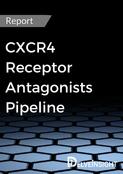cxcr4 receptor antagonists pipeline insight
DelveInsight’s, “CXCR4 Receptor Antagonists - Pipeline Insight, 2025,” report provides comprehensive insights about 10+ companies and 10+ pipeline drugs in CXCR4 Receptor Antagonists pipeline landscape. It covers the pipeline drug profiles, including clinical and nonclinical stage products. It also covers the therapeutics assessment by product type, stage, route of administration, and molecule type. It further highlights the inactive pipeline products in this space.
Geography Covered
- Global coverage
CXCR4 Receptor Antagonists Understanding
CXCR4 Receptor Antagonists: Overview
CXCR4 is a 352 amino acid rhodopsin-like GPCR, comprising an extracellular N-terminal domain, 7 transmembrane (TM) helices, 3 extra-cellular loops (ECL), 3 intra-cellular loops (ICL) and an intracellular C-terminal domain. CXCR4 can exist in the plasma membrane as a monomer, dimer, higher-order oligomer or nanoclusters.
Function - CXCR4 can control cell proliferation in addition to directing cell retention and movement, both in physiological processes, such as development and tissue regeneration, and in pathological ones, such as cancer growth. Signal transduction pathways downstream CXCR4 eventually control both cell movement and cell proliferation, which are both dependent on PI3K-Akt and mTORC signaling; the details, however, may vary from cell to cell and in different settings.
CXCR4 Receptor Antagonists - CXCR4 antagonists can disrupt adhesive tumor–stroma interactions and mobilize leukemia cells from their protective stromal microenvironment, making them more accessible to conventional drugs. Therefore, targeting the CXCR4-CXCL12 axis is a novel, attractive therapeutic approach that is explored in ongoing clinical trials in leukemia patients. Initially, CXCR4 antagonists were developed for the treatment of HIV, where CXCR4 functions as a co-receptor for virus entry into T cells. The diverse role of the SDF-1/CXCR4 axis in the pathogenesis of HIV, cancer, and rheumatoid arthritis, has established CXCR4 as a promising therapeutic target. Considering the vast population of patients with these diseases, the development of CXCR4 antagonists is of therapeutic as well as economic importance.
Report Highlights
The companies and academics are working to assess challenges and seek opportunities that could influence CXCR4 Receptor Antagonists R&D. The therapies under development are focused on novel approaches for CXCR4 Receptor Antagonists.
CXCR4 Receptor Antagonists Emerging Drugs Chapters
This segment of the CXCR4 Receptor Antagonists report encloses its detailed analysis of various drugs in different stages of clinical development, including phase III, II, I, preclinical and Discovery. It also helps to understand clinical trial details, expressive pharmacological action, agreements and collaborations, and the latest news and press releases.
CXCR4 Receptor Antagonists Emerging Drugs
Burixafor: TaiGen Biotechnology
Burixafor is a highly potent CXCR4 inhibitor currently under clinical development. It can be used as a stem cell mobilizer for hematopoietic stem cell transplantation and a chemosensitizer in hematological and solid tumors. It can also be used for stem cell collection in healthy individuals for personalized regenerative medicine. The drug is currently In phase 2 of clinical trials.
USL311: Proximagen
USL311 is a potent and selective small molecule antagonist of the chemokine receptor 4 (CXCR4), a G-protein coupled receptor that is activated by stromal-derived-factor-1 (SDF-1). CXCR4 is overexpressed in many tumors. USL311 was discovered by the team based at Proximagen, Upsher-Smith's wholly-owned research subsidiary in Cambridge, U.K., and has been moved into development by Upsher-Smith's Biotech Research Institute, the division of Upsher-Smith focused on development of new chemical entities.
Further product details are provided in the report……..
CXCR4 Receptor Antagonists: Therapeutic Assessment
This segment of the report provides insights about the different CXCR4 Receptor Antagonists drugs segregated based on following parameters that define the scope of the report, such as:
- Major Players working on CXCR4 Receptor Antagonists
There are approx. 10+ key companies which are developing the CXCR4 Receptor Antagonists. The companies which have their CXCR4 Receptor Antagonists drug candidates in the most advanced stage, i.e. phase II include, TaiGen Biotechnology.
Phases
DelveInsight’s report covers around 10+ products under different phases of clinical development like
- Late-stage products (Phase III and
- Mid-stage products (Phase II and
- Early-stage products (Phase I/II and Phase I) along with the details of
- Pre-clinical and Discovery stage candidates
- Discontinued & Inactive candidates
- Route of Administration
CXCR4 Receptor Antagonists pipeline report provides the therapeutic assessment of the pipeline drugs by the Route of Administration. Products have been categorized under various ROAs such as
- Infusion
- Intradermal
- Intramuscular
- Intranasal
- Intravaginal
- Oral
- Parenteral
- Subcutaneous
- Topical.
- Molecule Type
Products have been categorized under various Molecule types such as
- Monoclonal Antibody
- Peptides
- Polymer
- Small molecule
- Product Type
Drugs have been categorized under various product types like Mono, Combination and Mono/Combination.
CXCR4 Receptor Antagonists: Pipeline Development Activities
The report provides insights into different therapeutic candidates in phase II, I, preclinical and discovery stage. It also analyses CXCR4 Receptor Antagonists therapeutic drugs key players involved in developing key drugs.
Pipeline Development Activities
The report covers the detailed information of collaborations, acquisition and merger, licensing along with a thorough therapeutic assessment of emerging CXCR4 Receptor Antagonists drugs.
CXCR4 Receptor Antagonists Report Insights
- CXCR4 Receptor Antagonists Pipeline Analysis
- Therapeutic Assessment
- Unmet Needs
- Impact of Drugs
CXCR4 Receptor Antagonists Report Assessment
- Pipeline Product Profiles
- Therapeutic Assessment
- Pipeline Assessment
- Inactive drugs assessment
- Unmet Needs
Key Questions
Current Scenario and Emerging Therapies:
- How many companies are developing CXCR4 Receptor Antagonists drugs?
- How many CXCR4 Receptor Antagonists drugs are developed by each company?
- How many emerging drugs are in mid-stage, and late-stage of development for CXCR4 Receptor Antagonists?
- What are the key collaborations (Industry–Industry, Industry–Academia), Mergers and acquisitions, licensing activities related to the CXCR4 Receptor Antagonists therapeutics?
- What are the recent trends, drug types and novel technologies developed to overcome the limitation of existing therapies?
- What are the clinical studies going on for CXCR4 Receptor Antagonists and their status?
- What are the key designations that have been granted to the emerging drugs?


